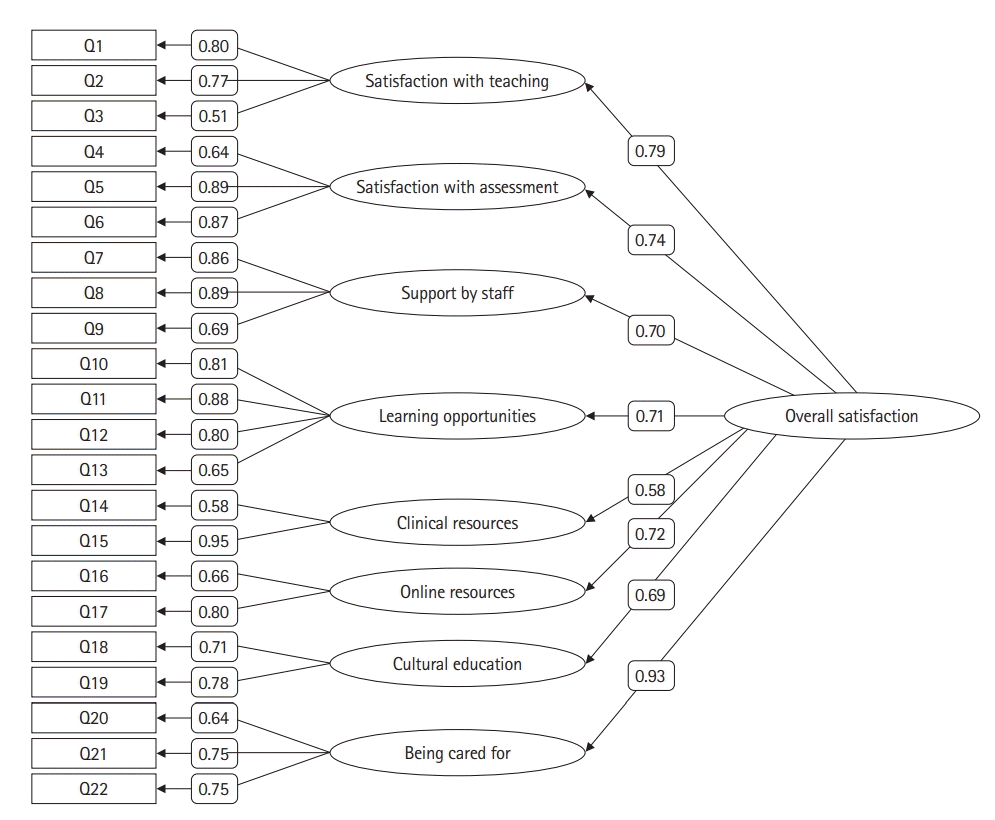Abstract
Purpose
Methods
Results
Conclusion
Notes
Authors’ contributions
Conceptualization: BS, GV, GS, MF, SEK, KG, KU. Data curation: BS, GV, GS, MF, SEK, KG, KU. Methodology/formal analysis/validation: BS, GS, MF, SEK, KG, KU. Project administration: GV. Writing–original draft: PHH, BS. Writing–review & editing: PHH, GV, GS, MF, SEK, KG, KU, BS.
Conflict of interest
Boaz Shulruf has been an associate editor of the Journal of Educational Evaluation for Health Professions since 2017, but had no role in the decision to publish this review. No other potential conflict of interest relevant to this article was reported.
Data availability
Data files are available from Harvard Dataverse: https://doi.org/10.7910/DVN/SQ8PJY
Dataset 1. Raw data of response by 3 MedSEQ cohort in 2017, 2019, and 2021.
Supplementary materials
References
Fig. 1.

Table 1.
Table 2.
Table 3.
Dependent variable: All things considered, how do you rate your level of satisfaction with your experience in the University of New South Wales medicine program? Statistically significant results are marked in bold. Red shading in the Beta column means the values are less than -0.1 or more than 0.1. Yellow shading in Sig. (significance) column means the values are less than 0.05.
Ref, reference; B, unstandardized beta; SE B, Standard error for the unstandardized beta; β, standardized beta.




 PDF
PDF Citation
Citation Print
Print




 XML Download
XML Download